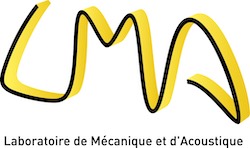Thin films are ubiquitous in present-day technologies, with applications ranging from surface coatings and micro-electro-mechanical systems to transistors, light-emitting diodes, and photovoltaic cells. In this presentation, I will focus on the morphological stability of crystalline thin-film surfaces during epitaxy. The evolution of such surfaces is an inherently multiphysics process, coupling chemo-physical mechanisms as diverse as evaporation-condensation, surface diffusion, and deformation. The onset of surface instabilities (as defined below) is governed by the interplay between these mechanisms. Understanding this interplay is of scientific and technological import for, if controlled, the aforementioned instabilities and the resulting structures would pave the way to the patterning of crystalline surfaces at submicron scales.
At the nanoscale, the surface of a crystalline film often consists of planar terraces separated by atomic steps. During growth, adsorbed atoms (adatoms) diffuse on terraces until they reach steps where they crystallize by attachment to kinks. The incorporation of adatoms results in the collective motion of steps, and the film is said to grow by step flow. For a train of equidistant steps, two instabilities are observed : bunching, which leads to regions of high step density separated by wide terraces, and meandering, whereby straight steps become wavy. Experiments indicate that bunching and meandering can coexist on metallic and semiconductor surfaces, in contrast to the predictions of the canonical Burton-Cabrera-Frank model. In this talk, I will present a thermodynamically consistent theory that can resolve this paradox. Next, I will discuss an extension of this theory to account for electromigration, that sheds new light on the reversals of stability with respect to bunching observed on silicon surfaces in the presence of direct-current heating. Finally, I will revisit the role of elastic step interactions during homoepitaxy. Throughout, I will compare the proposed framework with existing attempts to reconcile theory and experiments.


